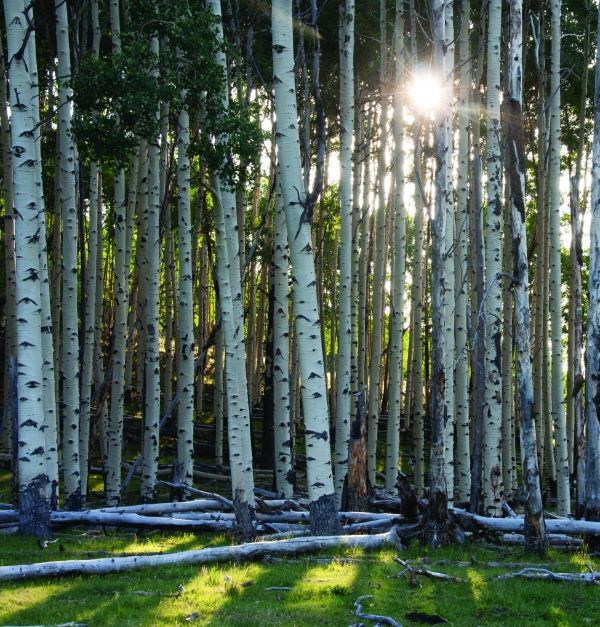In a world of rising levels of atmospheric carbon dioxide, plants should be happy, right? Experiments have shown that, yes, increased carbon dioxide does allow plants to photosynthesize more and use less water.
But the other side of the coin is that warmer temperatures drive plants to use more water and photosynthesize less. So, which force, CO2 fertilization or heat stress, wins this climate tug of war?
The answer, University of Utah researchers write in a new study in Proceedings of the National Academy of Sciences, is that it depends on whether forests and trees are able to adapt to their new environment. The study, they say, incorporates aspects of a tree’s physiology to explore how trees and forests respond to a changing climate.
“It’s taking the physiology of individual cells and scaling it up in a computer to make projections of a continents’ worth of forests,” says study co-author William Anderegg.
Read more at: The University of Utah
A grove of aspen trees. (Photo credit: Courtesy of Martin Venturas/University of Utah)


